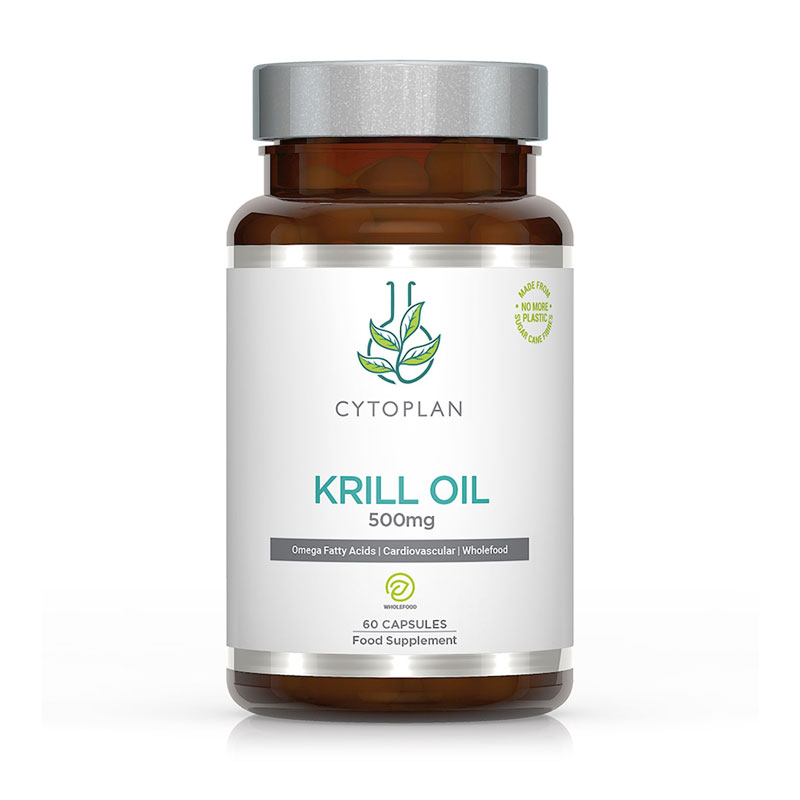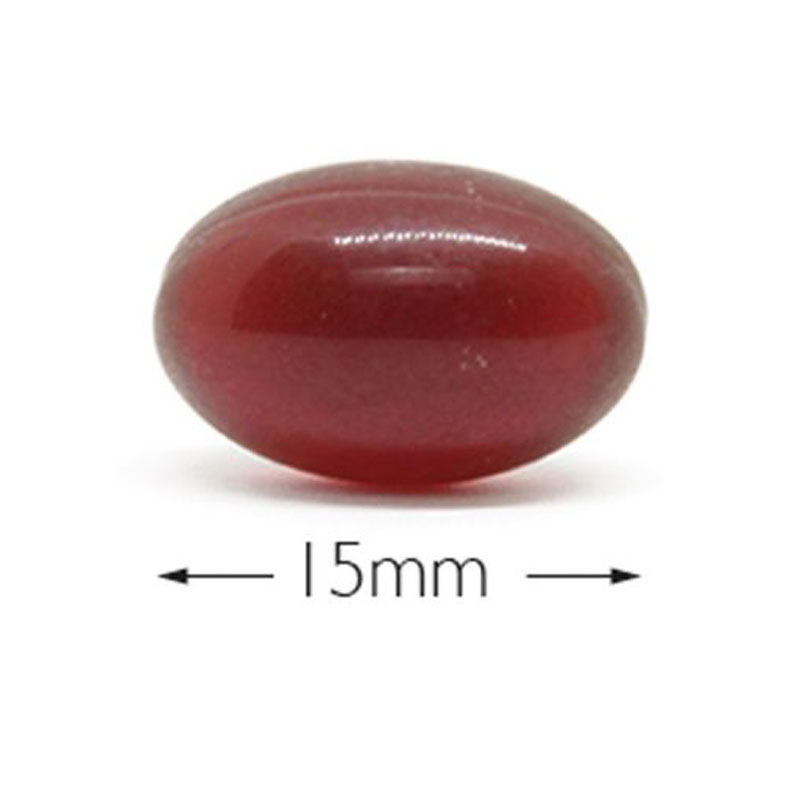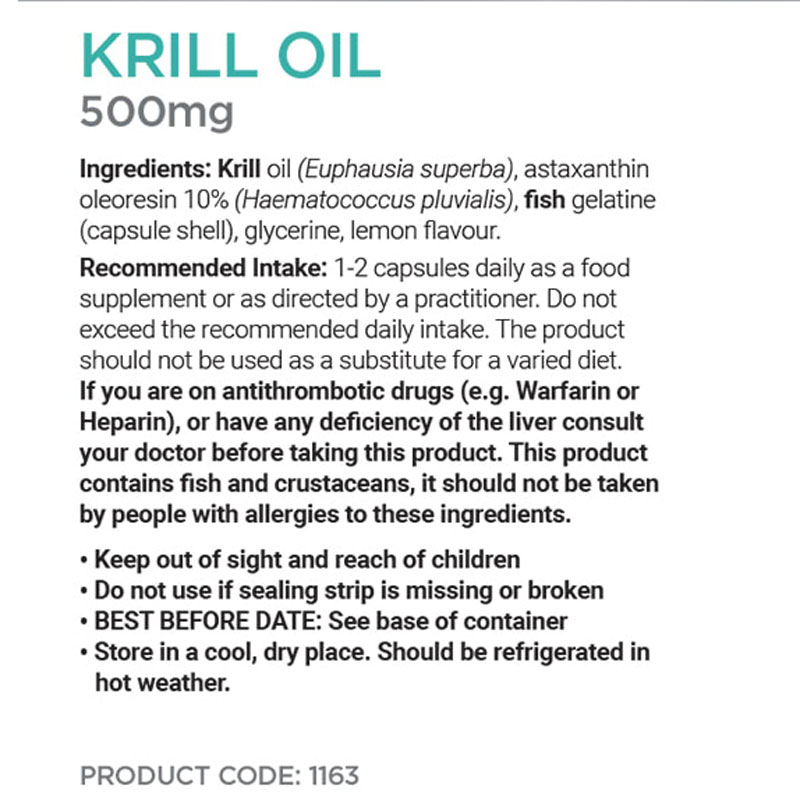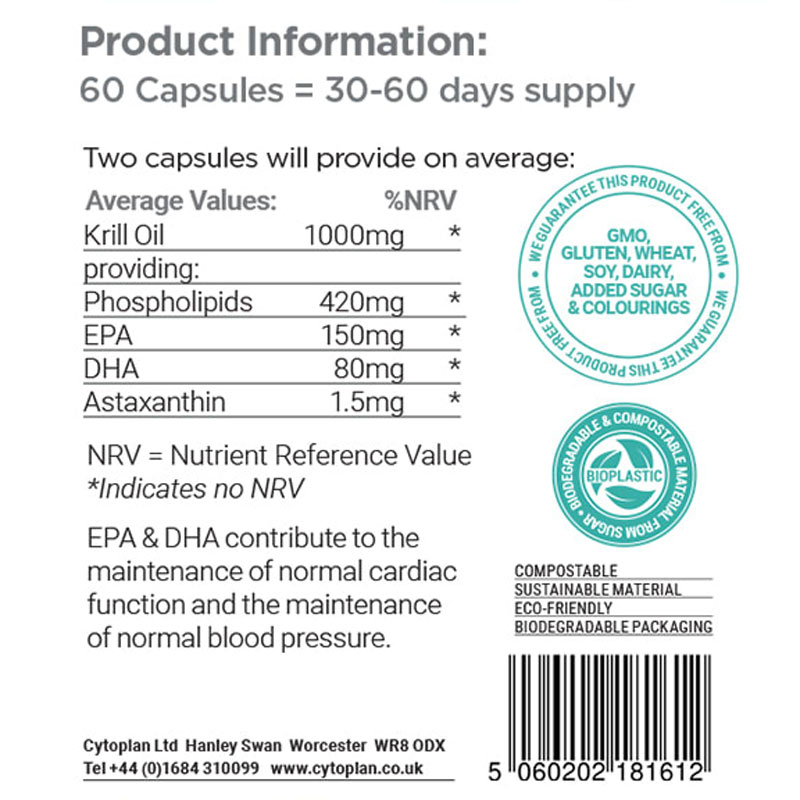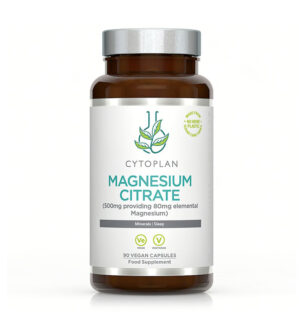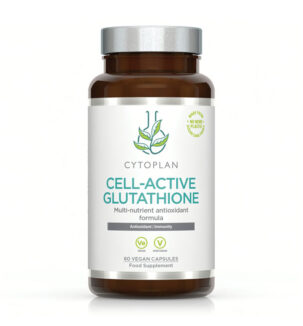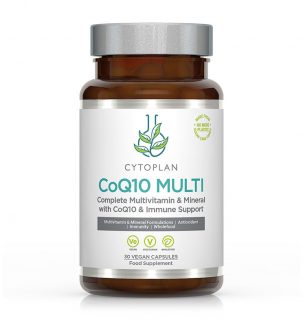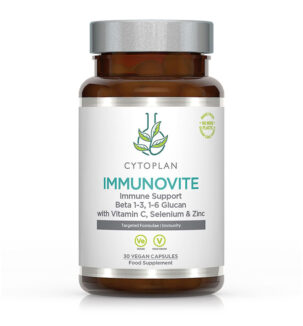Description
Cytoplan’s natural red Krill Oil is a rich source of the omega-3 fatty acids EPA and DHA.
It naturally contains a high level of astaxanthin, which gives krill their natural red colour; choline, which is used by the body to synthesise acetylcholine, an essential neurotransmitter; and phospholipids which are components of cell membranes.
- Red krill are shrimp-like crustaceans sourced from the Antarctic. All krill are red, this means they contain a good level of astaxanthin.
- Krill oil is a rich source of :- omega-3 EPA and DHA fatty acids
- Krill also contains choline, which is low in many Western diets. Choline is used to synthesise an essential brain chemical (or neurotransmitter) called acetylcholine. Acetylcholine is the brain chemical that is important for memory
- Krill oil provides a source of phospholipids. Cell membranes in the body are made up of phospholipids
- Cytoplan Krill Oil comes from Neptune, the market leader in krill oil (NKO)
- All the ingredients in our Krill Oil are present in naturally-occurring levels (we do not add in synthetic astaxanthin to elevate levels)
- Cytoplan’s suppliers are committed to maintaining the sustainability of krill within the strict guidelines of CCAMLR (The Commission for the Conservation of Antarctic Marine Living Resources)
- The filtering process uses cold water, low pressure distillation
Choline contributes to normal:
- homocysteine metabolism
- lipid metabolism and
- the maintenance of normal liver function
DHA contributes to:
- the maintenance of normal brain function (the beneficial effect is obtained with a daily intake of 250mg of DHA)
- the maintenance of normal vision
DHA and EPA contribute to:
- the normal function of the heart (the beneficial effect is obtained with a daily intake of 250mg of EPA and DHA)
- the maintenance of normal blood pressure (the beneficial effect is obtained with a daily intake of 3g of EPA and DHA)
- the maintenance of normal (fasting) blood concentrations of triglycerides (the beneficial effect is obtained with a daily intake of 3g of EPA or 2g of DHA)
Docosahexaenoic acid (DHA) intake contributes to the normal visual development of infants up to twelve months of age (the beneficial effect is obtained with a daily intake of 100mg of DHA).
Maternal intake of DHA contributes to the normal development of the brain and eyes of the foetus and breastfed infants (the beneficial effect is obtained with a daily intake of 200mg of DHA in addition to 250mg of EPA and DHA).



